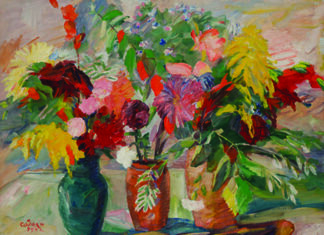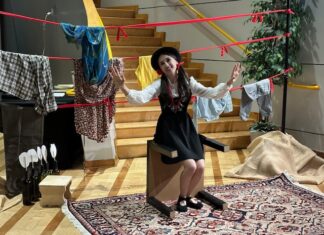CAIRO — On October 24, Egypt lost one of its best known and talented contemporary artists of Armenian origin, Chant Avedissian. He had been battling lung cancer for three years.
Avedissian was born in 1951 in Cairo, the son of Armenian refugees who had fled the Armenian Genocide. After studying fine art at the School of Art and Design in Montreal and applied arts at the National Higher School of Decorative Arts in Paris during the 1970s, Avedissian returned to Egypt.
He fused the techniques, concepts and cosmopolitan experiences acquired abroad with the heritage of his Armenian-Egyptian background to produce striking commentaries on the world around him. His artistry ranges from photography to costume and textile design to the painted stencils seen here.
His relationship with Hassan Fathy, a well-known Egyptian architect who advocated the use of local materials and craftsmanship, challenged Avedissian to reconsider local traditions of artistry and to appreciate the properties of common materials.

Exhibited widely, Avedissian’s artwork is held by the National Museum of African Art, Smithsonian Institution; the British Museum, London; the Tropenmuseum, Amsterdam; the National Museums of Scotland, Edinburgh; and the National Gallery of Jordan.
He was a student of Nora Azadian, the former chair of the Detroit Tekeyan Chapter.











